
What is Membrane Switch with RGB LED? Membrane Switch Design
What is Membrane Switch with RGB LED? Membrane Switch Design
Membrane switch with RGB LED is a flexible, illuminated button that combines touch control with colorful lighting. Each press activates a circuit while the RGB LEDs provide visual feedback, making it easy to see and use in any environment.
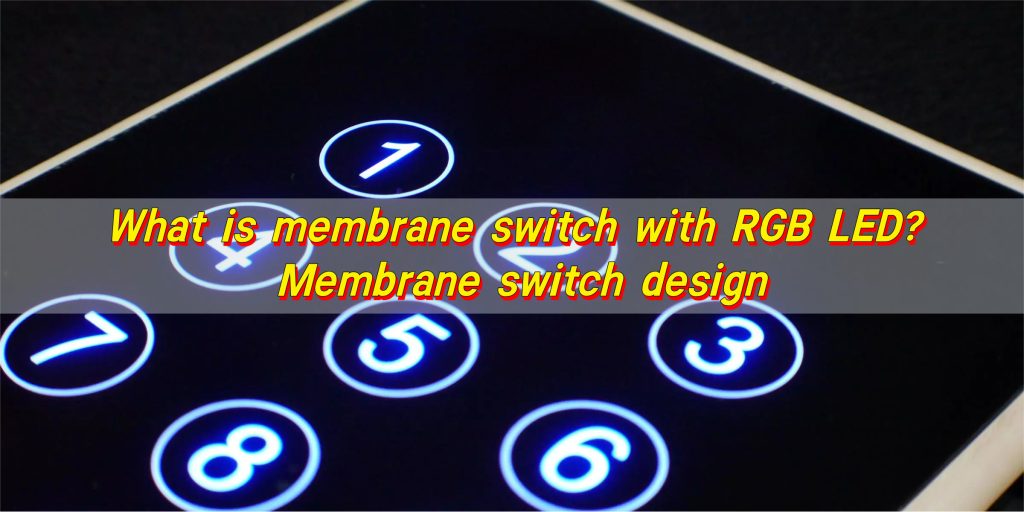
What Are the Different Types of Membrane Switches?
Membrane switches come in several types, each serving specific applications. Understanding these helps engineers and designers choose the most suitable option for their project.
- 1. Tactile Membrane Switches
Tactile switches give users a noticeable physical response. Inside, a metal dome or poly dome provides that feedback. It confirms that a command has been registered.
- 2. Non-Tactile Membrane Switches
Non-tactile switches have no mechanical click. They’re silent and rely on visual or audio indicators to confirm input. They are often combined with LED lights to guide the user.
- 3. PCB-Based Membrane Switches
Here, the conductive traces are printed directly on a printed circuit board (PCB). This design improves durability and allows for more complex circuit layouts.
- 4. FPC Membrane Switches
These use flexible printed circuits (FPC) instead of rigid boards. RGB LEDs can be mounted on FPCs for vibrant lighting effects in compact devices.
- 5. Capacitive Membrane Switches
Capacitive types sense the touch of a finger using electrical fields instead of pressure. They allow for completely sealed surfaces — great for waterproof and dustproof designs
- 6. Dome Array Membrane Switches
A dome array includes multiple metal domes mounted on a sheet. It simplifies assembly and ensures precise alignment. When paired with RGB LED lighting, these switches achieve both visual guidance and excellent tactile feedback.
Each type serves a different need, but when RGB LEDs are added, the functionality steps up.
What Lasts Longer, Membrane or Mechanical?
Modern metal dome membrane switches can reach over 1 million actuations. Mechanical switches, while robust, often wear out faster in harsh or dusty environments because their moving parts attract debris.
Membrane switches, by contrast, are sealed and protected. Moisture, dust, and chemical exposure rarely affect them. In industrial or outdoor use, they often outperform mechanical ones in reliability.
And because RGB lighting uses low-power LEDs, the switch remains energy-efficient while offering long-term illumination.
So, when properly designed and sealed, a membrane switch keyboard can last just as long — or even longer — than a typical mechanical one.
What Is a Backlit Membrane Keyboard?
A backlit membrane keyboard integrates lighting beneath its top layer. In the case of RGB LED membrane switches, each key or section can emit different colors.
This lighting is not just for looks — it serves real purpose:
- It enhances visibility in dark environments.
- It highlights key zones or active functions.
- It improves aesthetics and user engagement.
Inside, thin LEDs are embedded beneath the membrane layers. The light diffuses through translucent materials to achieve even illumination.
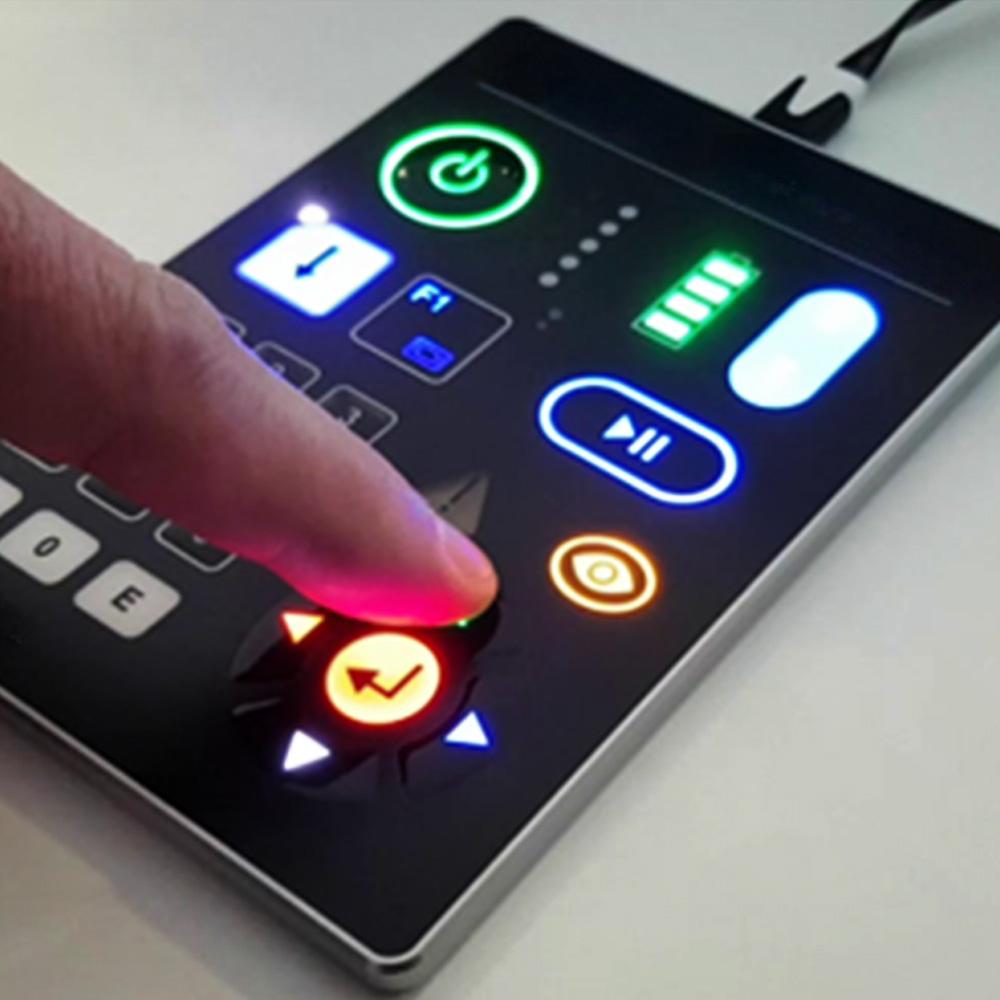
RGB backlighting takes it a step further. Instead of one static color, each key can display millions of shades. Users can program color patterns or use color to represent modes, alerts, or functions.
What Are the Disadvantages of a Backlit Keyboard?
Even though RGB backlit membrane switches shine with benefits, a few minor drawbacks exist.
- Higher Power Consumption: RGB lighting uses LEDs that draw small amounts of power. While minimal, it’s still higher than non-lit switches.
- Slightly Higher Cost: Integrating RGB lighting, especially customizable ones, adds a bit of cost during production.
- Heat Considerations: Continuous LED use can produce low heat, which designers must manage with heat-resistant materials.
- Complex Assembly: Adding lighting layers increases the number of components, requiring more precision in assembly.
Still, these are minor when compared to the gains in performance, visibility, and style.
What Is the Difference Between RGB and Backlit Keyboards?
The terms “RGB” and “backlit” are often mixed up, but they’re not the same.
A backlit keyboard uses one single light color — usually white, blue, or red. It simply helps users see in the dark.
An RGB keyboard, on the other hand, can display any color combination. Each LED contains red, green, and blue diodes, which blend to produce millions of shades. RGB switches allow custom lighting effects, animations, and zone control.
For instance, you can set function keys to glow orange, system buttons to shine green, or alert zones to flash red. In industrial devices, RGB light can represent machine status or user feedback.
In short:
- Backlit: One color illumination.
- RGB: Full-spectrum lighting with effects and flexibility.
How Long Do RGB LED Lights Last?
LEDs are solid-state components, meaning no filaments, no gases, and no fragile glass parts.
Typically, RGB LEDs last between 50,000 to 100,000 hours depending on current and heat management. That’s years — even decades — of continuous use.
Unlike traditional bulbs, LEDs don’t fail suddenly. Instead, their brightness slowly decreases over time. Proper design ensures consistent lighting even after thousands of hours of use.
In membrane switch design, LED placement, current regulation, and material choice all affect life expectancy. With the right materials and stable circuits, these switches can outlast the product they’re built into.
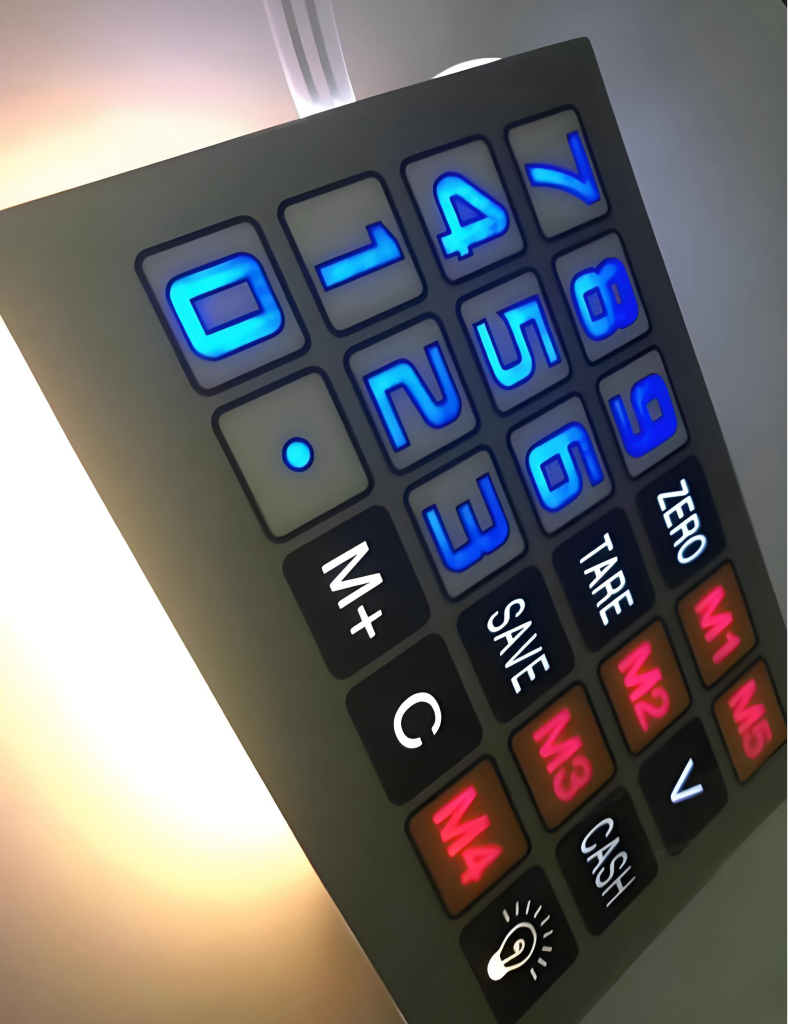
For applications like industrial controls or medical instruments, this reliability is a major advantage.
What Are the Disadvantages of RGB?
RGB lighting is eye-catching, but it’s fair to note a few small downsides.
- Power Use: RGB LEDs need more control circuits and slightly higher power, especially in dynamic effects.
- Color Calibration: Achieving perfect white or specific hues requires fine-tuning.
- Slight Complexity: More features mean more design considerations.
Even so, these are not deal-breakers. The advantages of RGB LED membrane switches — beauty, visibility, usability, and innovation — far exceed these minor drawbacks.
What Is RGB Best Suited For?
RGB lighting is not just about looks, it serves many real-world purposes.
- Industrial Control Panels: In factories or production lines, RGB colors can indicate machine status instantly.
- Medical Equipment: Color-coded feedback helps reduce human error.
- Consumer Electronics: RGB backlighting turns ordinary devices into premium ones.
- Automotive Consoles: In vehicles, RGB switches enhance dashboard visibility at night.
- Gaming and Entertainment: Dual LED keyboards and membrane switch keyboards with programmable colors add emotion and energy to every key press.
- Medical and Laboratory Devices: RGB lighting helps operators identify functions and monitor device states clearly, even in dim environments.

The versatility of RGB LED membrane switches makes them ideal for almost any modern interface that needs light, control, and beauty.
Conclusion:
Membrane switch with RGB LED is more than just a button — it’s an intelligent interface that connects humans and machines with light, color, and emotion. It offers durability, flexibility, and customization that mechanical switches can’t match.
For more technical information, samples, or OEM solutions, please contact sales@best-membraneswitch.com
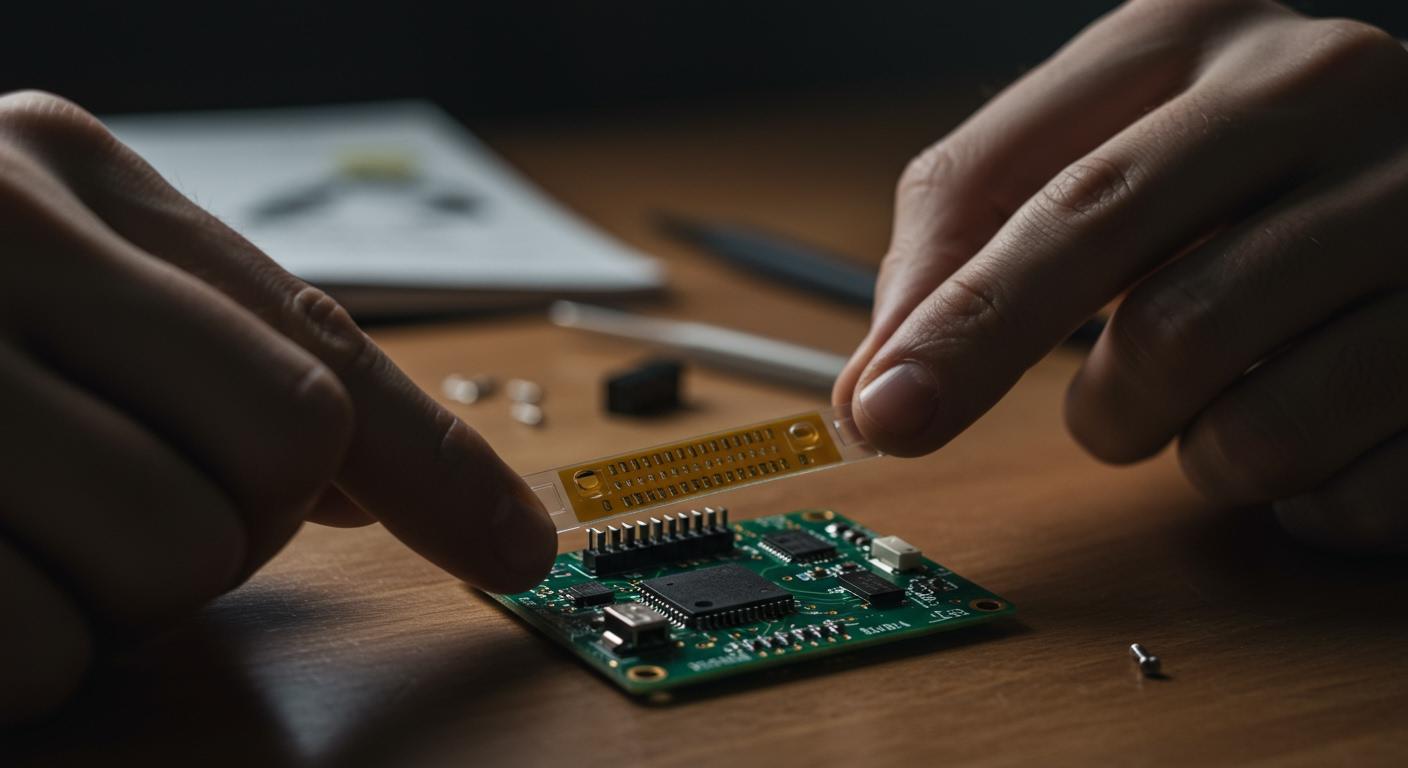
How to Source the Finest Membrane Switch Button?
You should be aware of some crucial factors when searching for top-quality membrane switch buttons. The best buttons will provide a dependable and high-performing interface for your device. Let us explore the best methods to source the finest membrane switch buttons. Assess the overlay material and longevity When searching for a membrane switch button, opt ...

What Makes Purchasing a Rubber Membrane Switch Beneficial?
The demand for rubber membrane switches has increased substantially. What makes them popular among manufacturers and product designers? You can expect a perfect combination of dependability, longevity and tactile performance. The versatility of silicone rubber and refined electronic design make a winning combination. You can also find a user-friendly and functional interface. Superb tactical feedback ...
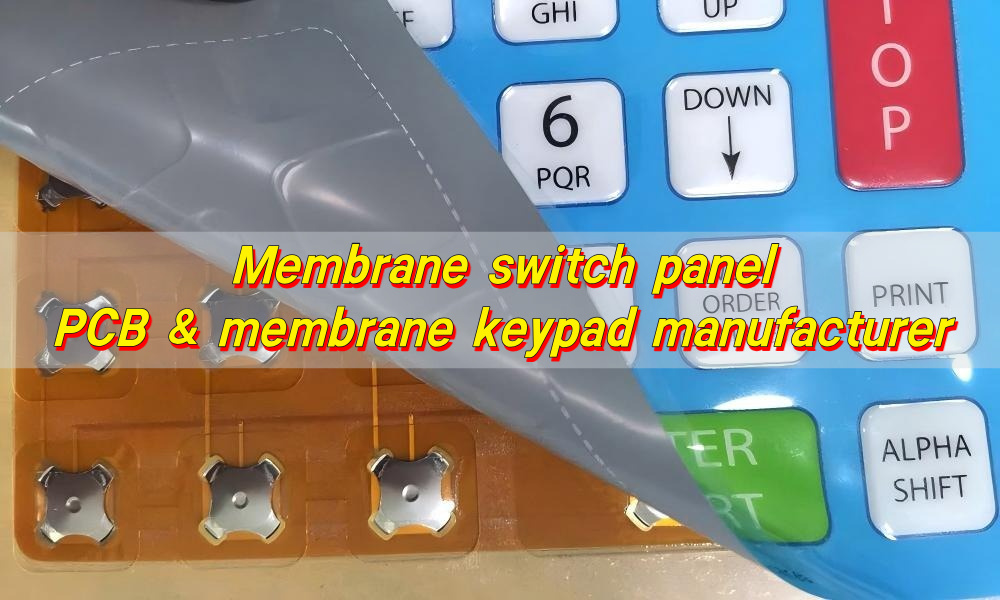
Membrane Switch Panel, PCB & Membrane Keypad Manufacturer
What Does a PCB & Membrane Keypad Manufacturer Do? PCB & membrane keypad manufacturer specializes in designing and producing custom-built user interfaces that connect humans with machines. Our work involves the creation of membrane switches, membrane buttons, and PCB-based membrane keypads that fit specific device requirements. Manufacturers use multilayer construction. The top layer has printed ...
Contact us online